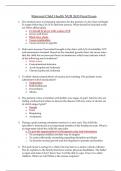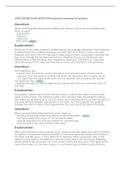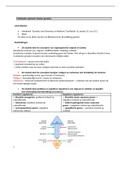Samenvatting
Summary International Business Environment
- Vak
- EBP031A05
- Instelling
- Rijksuniversiteit Groningen (RuG)
Covers the main topics that will be of great help in preparing for the final exam for the international business environment. The summary mainly covers the topics for the final weeks. There is an overview of the main terms and definitions that assists in comprehending the demands for the mcqs for t...
[Meer zien]













